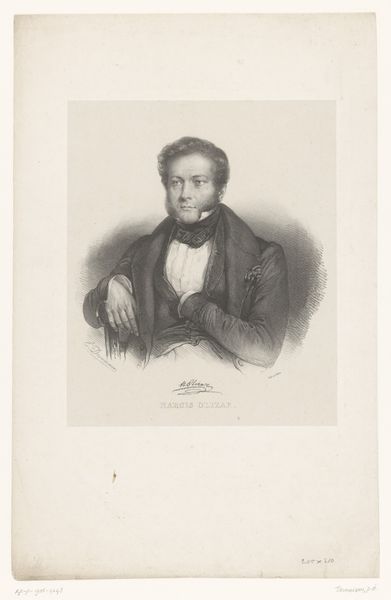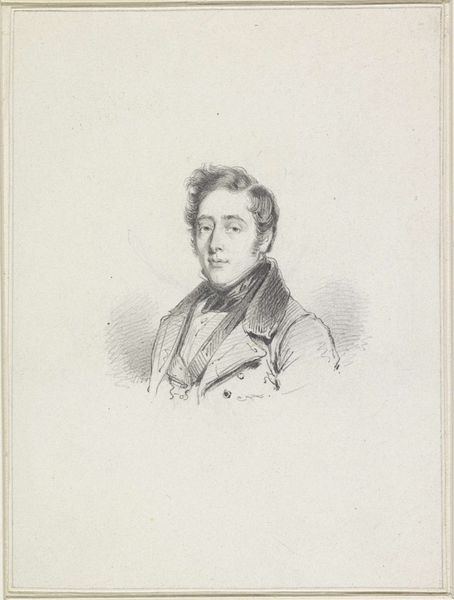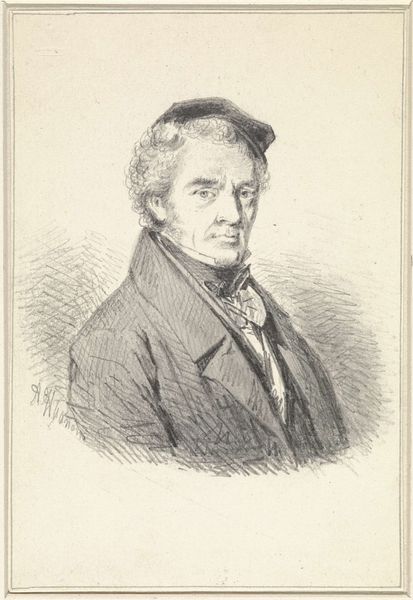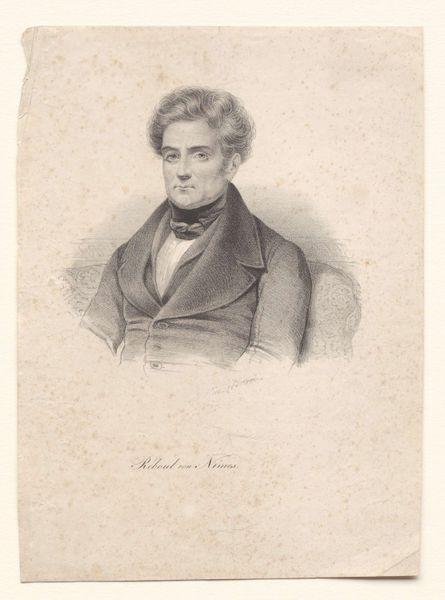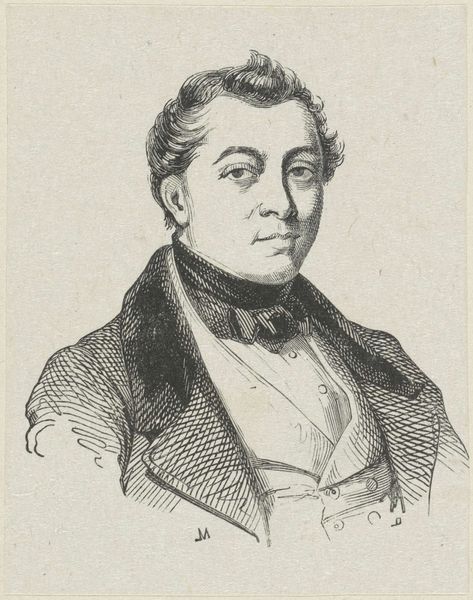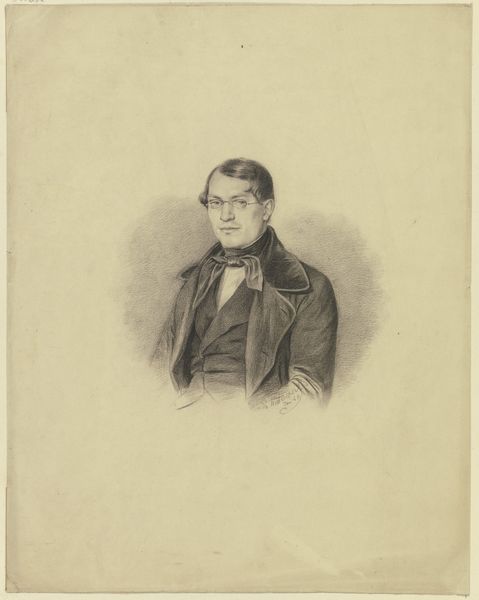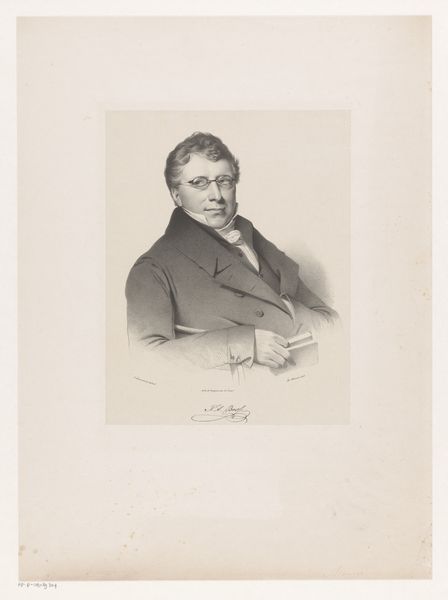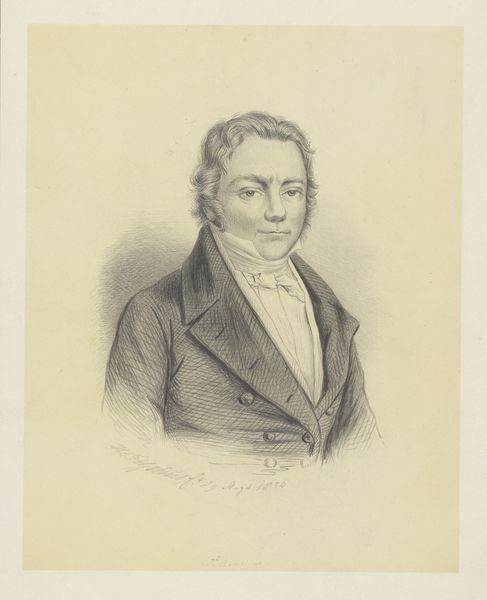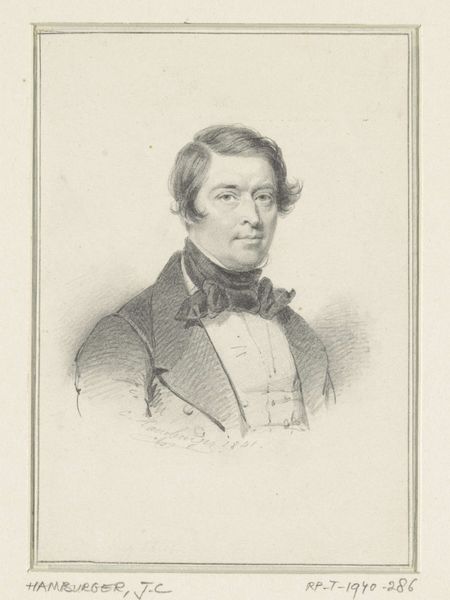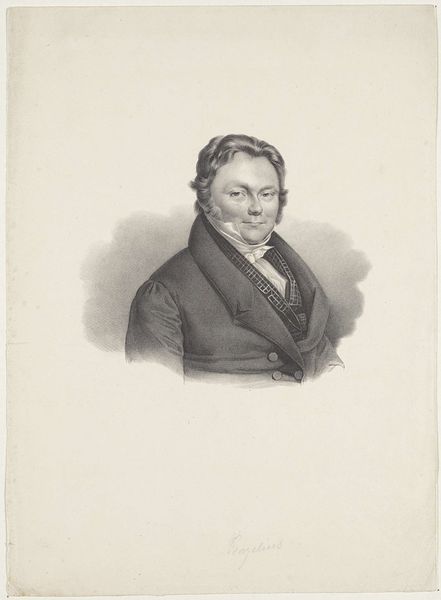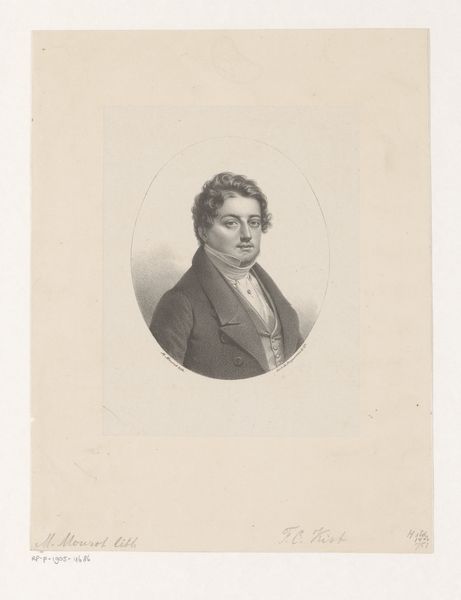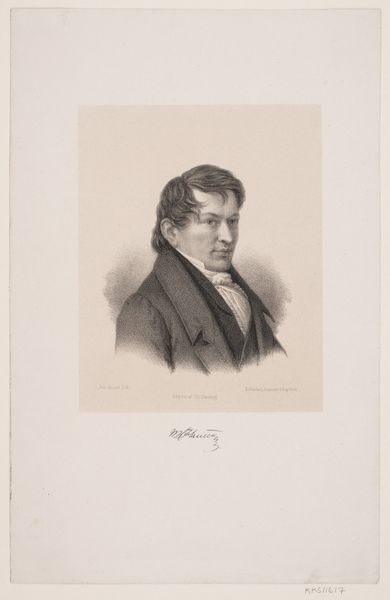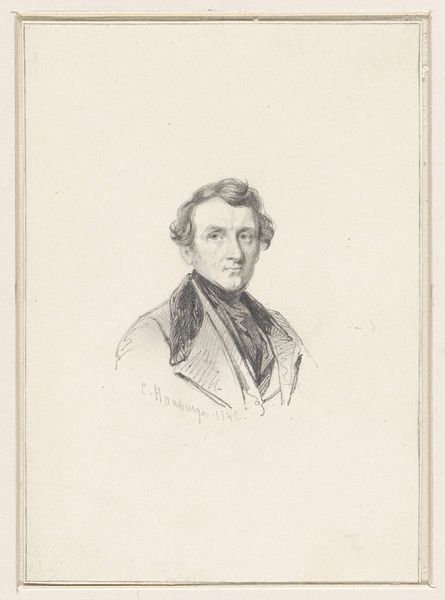
drawing, pencil, graphite
#
portrait
#
pencil drawn
#
drawing
#
pencil sketch
#
figuration
#
pencil drawing
#
romanticism
#
pencil
#
graphite
#
portrait drawing
#
academic-art
Dimensions: height 114 mm, width 88 mm
Copyright: Rijks Museum: Open Domain
Curator: Here we have Coenraad Hamburger’s "Portret van James de Rijk," a pencil and graphite drawing created in 1841. Editor: My initial thought is elegance and precision. There's something about the delicate shading that feels very refined, almost like looking at an engraving rather than a simple pencil sketch. Curator: It certainly speaks to the conventions of portraiture in that era, doesn't it? We see echoes of Romanticism in the idealized features, but also a dedication to accurate representation expected within the artistic and societal parameters of Academic Art at that time. Consider who James de Rijk was—undoubtedly part of a social class that expected to be portrayed in a particular way. Editor: And I’m drawn to the craft itself. Notice the way Hamburger renders the fur collar, those controlled lines creating such tactile depth. You can almost feel the difference in texture between the velvet and the smoother fabric of his coat. One thinks about access to these materials, who could afford them, and thus, be memorialized in such a way. Curator: Absolutely. It points to the commodification of artistry—portraiture became a service offered to those who could pay. But the quality suggests Hamburger was also elevating the status of drawing itself. He wasn’t merely copying; he was interpreting and adding his artistic voice. The institutions of the time surely recognized and valued the skills that such precision and detail required. Editor: Do you think the precise shading suggests this may have been a preliminary sketch, used for reproduction through engraving later on? These were sometimes commissioned to be spread more widely... the image became another kind of commodity. Curator: That's entirely possible, especially given the level of detail. The relatively understated background keeps the focus squarely on James de Rijk himself, directing the viewer's attention to his social standing. Editor: Seeing the way in which the work memorializes both subject and maker – from the pencil lead, to the sharp wit, all combined, it makes you contemplate the role of labor in constructing visual narratives. Curator: Precisely, and by understanding that social and artistic context, we can really appreciate the subtle statements embedded within this portrait. Editor: Indeed, it’s fascinating how materials and artistry intertwine with social history here.
Comments
No comments
Be the first to comment and join the conversation on the ultimate creative platform.
